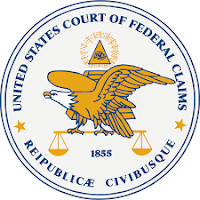In Hale v. United States, 2019 U.S. Claims LEXIS 502 (May 14, 2019), the Court of Federal Claims has held that various items of correspondence from IRS to a taxpayer were not notices of disallowance and, thus, did not start the two-year period for initiating a refund lawsuit.
IRC § 6532 establishes jurisdictional time limitations on tax refund suits. A tax refund suit may not be brought until six months after the filing of a tax refund claim with IRS, unless IRS renders a decision before the 6-month period expires. A tax refund suit must be brought within two years from the date IRS mails the first notice of disallowance for a refund claim. (Code Sec. 6532(a)(1))
The taxpayer, Ms. Hale, received the following correspondence from IRS with respect to tax returns she had filed:
- A letter explaining a mathematical error she had made in calculating her earned income credit on her 2012 return.
- A letter restating IRS's position that the earned income credit was calculated incorrectly and had been reduced from $3169 to $3069.
- Letters requesting more information with respect to other tax returns she had filed.
 The court held that none of the correspondence that the taxpayer received were notices of disallowance that started the Code Sec. 6532(a)(1) two-year period for filing a refund suit.
The court held that none of the correspondence that the taxpayer received were notices of disallowance that started the Code Sec. 6532(a)(1) two-year period for filing a refund suit.
The court said, citing Smith v. US, 478 F.2d 398 (1973), that, although a notice of disallowance need not take any particular form, it must adequately notify the taxpayer "of the Commissioner's adverse action" in order to trigger the two-year statute of limitations set forth in Code Sec. 6532.
It also said that internal guidance from IRS suggests that, among other criteria, a notice of disallowance must inform the taxpayer of her "right to file suit" and of the "period in which suit may be filed."
Notices informing taxpayers that IRS needs more information to process a claim, along with math error notices or similar correspondence, typically fail to adequately notify taxpayers of a final adverse action or of their right to file suit within two years. (Chief Counsel Advice 200203002)
Here, none of the correspondence in the record met these criteria for effective notices of disallowance. They did not inform Ms. Hale of her right to sue or of the applicable two-year limitations period.
Contact the Tax Lawyers at
Read more at: Tax Times blog






